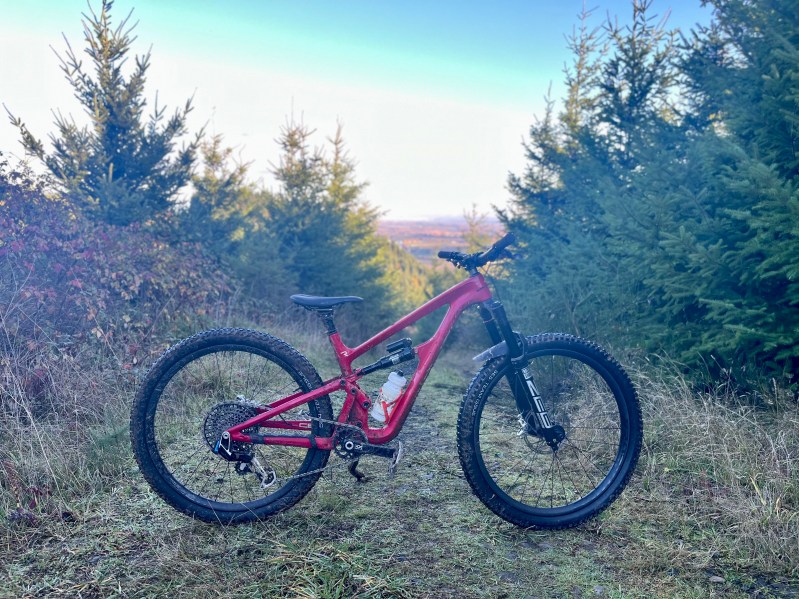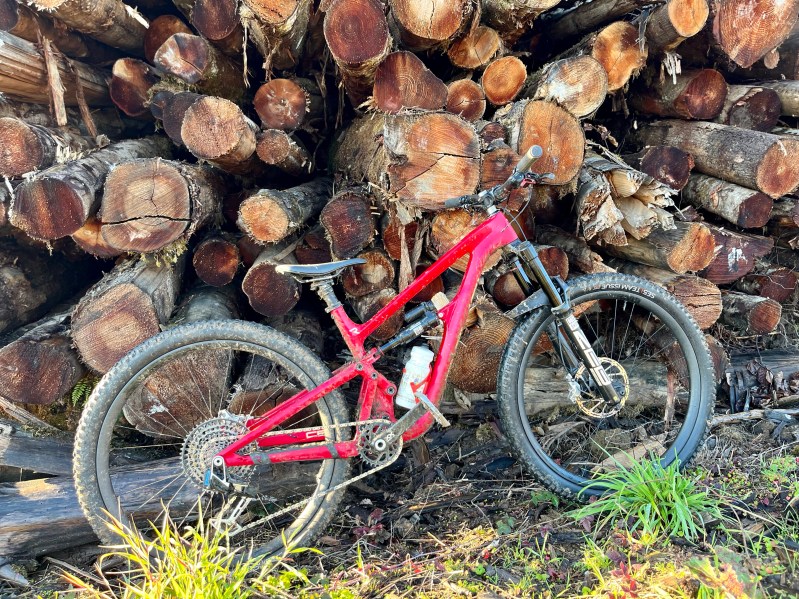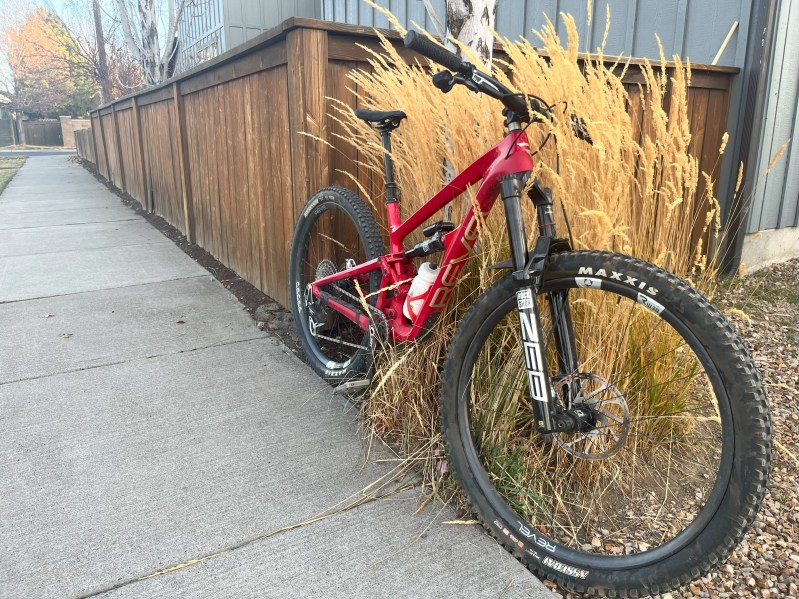
At The Manual, we are privileged to review some phenomenal products. This opportunity has included some excellent mountain bike components and entire bikes themselves.
Of all the products we’ve received and I have been able to test and review, the Revel Rail 29 is near the top of the “wow” list. I spent the last few months on the Rail, and it is safe to say that this mountain bike impressed me perhaps more than any other mountain bike I have ever ridden.
I am happy to share my experience riding the Revel Rail 29, discussing what I liked and didn’t (which isn’t a lot) with you, dear reader.

Revel mountain bikes
Adam Miller established Revel Bikes just a few years ago alongside his already-established Why Cycles. While Why Cycles focused on beautifully crafted titanium hardtails and fully rigid bikes, Revel ventures into the carbon full-suspension world of mountain bikes.
And so enters the Revel Rail 29—the “29” referring to the 29-inch wheel size, as the original Revel Rail rolls on 27.5-inch wheels. Despite the mountain bike company being somewhat new on the scene, Revel has already demonstrated that they build and design quality mountain bikes.
Having heard the hype, I jumped at the chance when Revel got in touch with The Manual about getting a mountain bike sent my way. And the bike I had my eye on for a while was the Revel Rail 29. I wanted to see if the Rail 29 lived up to the hype I’d heard coming from the mountain biking industry, throw a leg over, and give it a go.

Pros and cons of the Revel Rail 29
There are a lot of positive things to say about this mountain bike. Overall, the bike performed incredibly well, and, if you couldn’t tell from the title of this article, it is perhaps the best mountain bike I’ve ridden.
But that doesn’t mean that the Revel Rail 29 doesn’t have its faults. However, it is also important to mention that an argument could be made that some of the “negative” aspects of the Rail 29 aren’t necessarily the fault of Revel but an industry standard that could be changing soon.
What we liked about the Revel Rail 29
- Geometry
- Suspension platform
- Component build
- Climbing
- Descending
Cons of the Revel Rail 29
- Size numbers
- Component sizing

Everything you need to know about the Revel Rail 29
Revel offers five different build options for the Rail 29, each with better components and each more expensive than the previous. These five different builds have a nearly $6,000 range, with the “lowest” build starting at $5,500 and topping out at $11,000.
Revel sent me their highest-level Rail 29 in size medium—their SRAM XX Eagle Transmission build. And while these luxuries weren’t crucial, I wasn’t complaining.
Here are the major components of the build:
- Suspension: Rockshox took care of the suspension with a 160mm travel Zeb Ultimate fork and a 155mm travel Super Delux Ultimate rear shock. Revel utilizes the Canfield Balance Formula (CBF) suspension platform for maximum traction and support while climbing and descending.
- Wheels: A set of Revel’s own carbon RW30 mountain bike wheels laced to Industry Nine hubs come standard on this build. The wheels reminded me of Forge+Bond’s 30AM wheelset, and they just so happen to be made in the same factory.
- Drivetrain: The Revel Rail 29 I tested boasts SRAM’s top-level drivetrain offering, the XX Eagle Transmission, a fully electronic shifting system for mountain bikes.
- Brakes: Stopping this mountain bike was SRAM’s new Code Ultimate Stealth brakes.
- Dropper post: While my test bike didn’t come with this dropper post, this build comes with a Rockshox Reverb AXS—a fully wireless, Bluetooth dropper post.

Revel Rail 29: How the mountain bike performed
The Revel Rail 29 stands out as one of the best mountain bikes I’ve ever ridden. I was thoroughly impressed by this well-rounded trail bike, which had some aspects that especially stood out.
- Geometry. The Revel Rail 29 lands on the more moderate side with many of its geometry numbers. A 65° headtube angle (HTA)—relatively moderate for a 160/150mm trail bike—helped the mountain bike feel responsive. Paired with a shorter 447mm reach and a 1202mm wheelbase, these geometry numbers allowed for a snappy and agile bike that was quick on the climbs and easy to get into the air.
- CBF suspension platform. I had heard good things about the CBF platform Revel uses on their mountain bikes, and it lives up to the hype. The platform propelled me forward on climbs, providing perfect support and traction. When pointing down the hill, the CBF platform offers ample support through the stroke.
- Climbing. The Revel Rail 29 climbed incredibly well for a long-travel mountain bike. This has much to do with the already mentioned CBF platform and the geometry. A 65° HTA put just the correct weight over the front while a 76° seat tube ange kept me in a proper pedaling position. And the relatively shorter length of the bike made tight corners and technical sections easier.
- Descending. Shorter mountain bikes don’t usually equate to a more confident descent. However, I found myself descending confidently and comfortably on the Rail 29. The CBF platform helped maintain stability over just about anything the trail threw at me. Fast and flowy trails or steep and technical, the bike always felt controlled and planted.
- Components. I was truly spoiled with the build on this mountain bike. The bike cost $11,000—you can bet that the top-of-the-line components performed as such.
But there were also a couple of things that I would have changed about the bike. The first isn’t so much a knock on Revel as it is on the mountain bike industry.
My beef here is with the crank and seatpost length. A size medium bike should come with a 170mm dropper post. A longer dropper would allow for more significant post-insertion and better get the seat out of the way. Also, as a reverse of that concept, cranks don’t need to be 170mm long—165mm will do. Shorter isn’t less efficient and will prevent rock strikes.
My other issue was the sizing of the Rail 29. A 447mm reach is a bit short for a medium-sized mountain bike. A 469mm reach for a size large is fairly short, especially when so many mountain bike companies have landed on a 480mm reach for their size large. I adjusted and absolutely loved the Revel Rail 29, but I imagine some might find that they fall in between sizes.

Should you buy the Revel Rail 29?
In a word: Absolutely.
The glowing positives far outweigh any negatives for this mountain bike. The Revel Rail 29 is a phenomenal mountain bike that could easily be the only bike you need. Despite the long travel numbers, the Rail 29 is an efficient pedaler, making 20-plus mile days feel like a breeze.
Pointing the bike down the mountain is where the Revel Rail 29 opens up. Jumps, drops, steep, and technical terrain, the Rail 29 remained confidently planted to the trail—unless you didn’t need it to be.
Yes, the model I tested is expensive, but I wouldn’t let that stop me from getting a Rail 29. The Rail 29 starts at $5,500 and has a very reasonable, quality mid-level component build for that price. I would buy the Revel Rail 29 for the performance and the suspension platform.
You can purchase the Revel Rail 29 at Revel’s website or find an authorized dealer.



